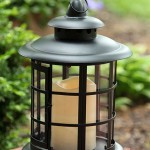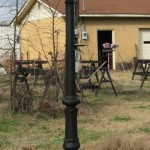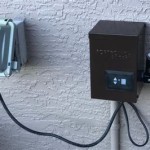Design an Outdoor Lighting Plan: Essential Aspects for Enhanced Ambiance
Outdoor lighting plays a pivotal role in enhancing the ambiance of your outdoor space. A well-designed lighting plan can illuminate pathways, highlight architectural features, create cozy seating areas, and deter intruders. Here are some essential aspects to consider when designing an outdoor lighting plan:
1. Purpose and Function
Determine the primary purpose of your outdoor lighting. Is it for safety, security, or aesthetic appeal? Identifying the function will help you choose the appropriate light fixtures and placement.
2. Light Levels and Zones
Decide on the desired light levels for different areas of your outdoor space. Create zones with varying intensities to accommodate specific activities, such as reading, dining, or entertaining.
3. Fixture Selection
Choose light fixtures that complement the style of your home and outdoor decor. Consider factors such as durability, weather resistance, and energy efficiency. Opt for fixtures with adjustable heads to direct light as needed.
4. Placement and Spacing
Strategically place light fixtures to illuminate pathways, avoid dark spots, and highlight architectural features. Space fixtures evenly to create a balanced and cohesive look.
5. Light Color and Temperature
Select the appropriate light color and temperature for different areas. Warm white light creates a cozy ambiance, while cool white light enhances visibility and security.
6. Integration with Architecture
Incorporate outdoor lighting into your home's architectural design. Utilize recessed lighting in walls or steps, mount fixtures on eaves or posts, and highlight architectural elements with accent lighting.
7. Energy Efficiency
Opt for energy-efficient light fixtures with long lifespans. Consider using LED lights, which consume less energy and provide a longer lifespan than traditional bulbs.
8. Control and Automation
Control outdoor lighting remotely using timers, sensors, or smartphone apps. This allows you to adjust light levels and schedules as needed, enhancing convenience and security.
9. Safety and Security
Use outdoor lighting to deter intruders and improve visibility. Install motion-activated lights in strategic locations and illuminate dark areas around doors and windows.
10. Continuity and Consistency
Maintain continuity and consistency in your outdoor lighting design. Use similar fixtures and light levels throughout the space to create a cohesive and harmonious ambiance.
By considering these essential aspects, you can create an outdoor lighting plan that not only enhances the aesthetics of your space but also ensures safety, functionality, and energy efficiency. Transform your outdoor space into a welcoming and inviting haven with the right lighting design.

Plan Your Landscape Lighting Design Twilight Designs

Outdoor Lighting How To Design A Garden Scheme Pt Iii

Landscape Lighting Design Jeffrey Heid Architect

Outdoor Lighting How To Design A Garden Scheme Pt Iii

Landscape Lighting Plan From Hadco Draw A Dotted Line The Power Console To Each Design Kits Led
Hamptons Landscape Lighting Luxury Outdoor Design Installation Service

Outdoor Lighting How To Design A Garden Scheme Pt Iii

Outdoor Landscape Lighting Effects Garden Design
Hamptons Landscape Lighting Luxury Outdoor Design Installation Service

Landscape Lighting Design Overview







